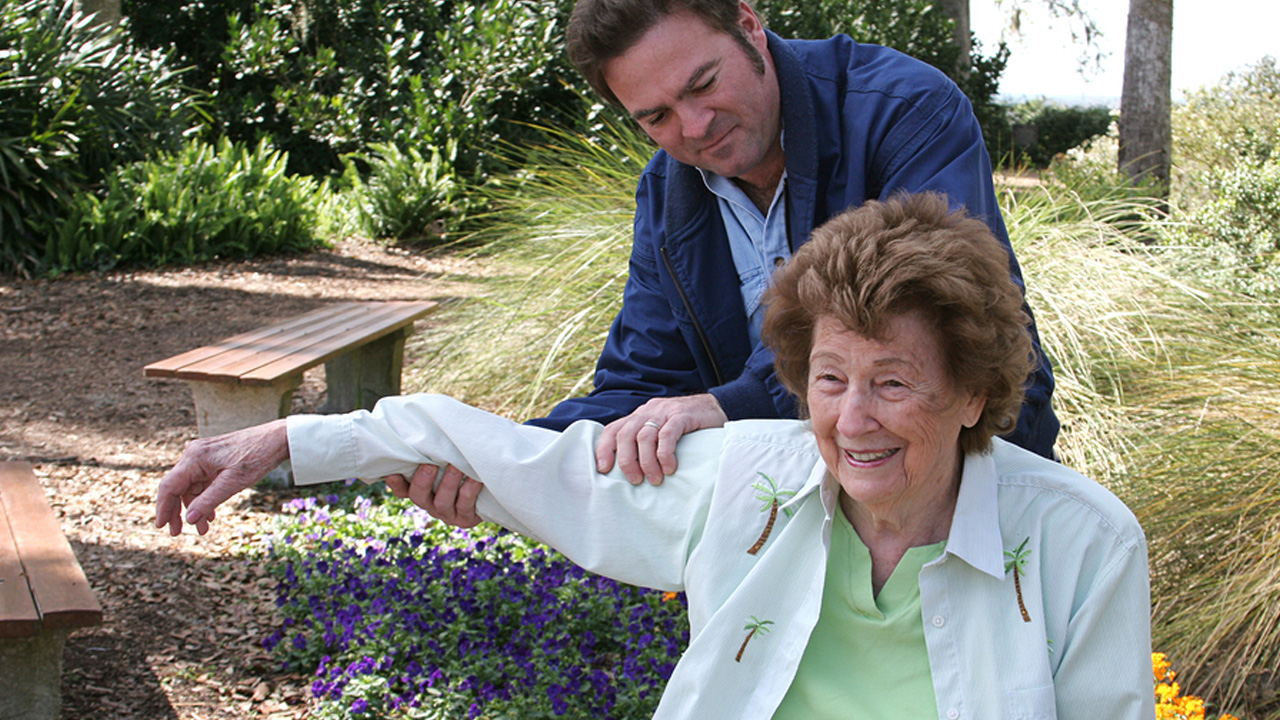Passive Range of Motion Exercises for Caregivers
Category:

Dear Allegra:
I am a caregiver for my great-aunt who is 93 years old. She has a debilitating case of osteoarthritis throughout her body, but especially in her hands and fingers. Her physician encouraged me to work on what he calls “passive range of motion” exercises. He demonstrated one I can use on her hands to help relieve the arthritis pain.
Since I’ve largely learned how to be a caregiver through trial and error, I’m not entirely sure what passive range of motion is and what other types of exercises I can do with my aunt.
Can you please explain this in more detail?
Fondly,
Jamie
Range of Motion Exercises
Dear Jamie:
Most family caregivers probably can identify with the trial and error learning you’ve experienced. Many loved ones who start helping a family member with a few small chores, such as transportation and meals, eventually find themselves providing assisting with more clinical tasks. It can be a little daunting.
First, let’s tackle what passive range of motion exercises are and why physicians order them. Then I can share a few resources with good examples to use.
Unlike active forms of exercise that a patient can perform on their own, passive range of motion exercises are when a caregiver or health professional performs the exercise for the patient. They are used when people can’t exercise independently. It might be because the patient has had a stroke or is recovering from an injury or surgery.
A few benefits of passive range of motion exercises include:
- Improved muscle strength and decreased stiffness
- Less pain caused by conditions like amyotrophic lateral sclerosis and muscular dystrophy
- Improved joint flexibility and range of motion in joints
- Increased circulation for people who are confined to wheelchairs or have limited mobility
Many helpful resources demonstrate how to perform passive range of motion exercises on an adult. Here are a few to help you get started:
- AHCA NCAL: This video was designed to help certified nurse assistants master passive range of motion exercises.
- Northern Colorado Training Institute: This series of videos created by NCTI to describe passive range of motion exercises is especially helpful.
- Shoulder Passive Range of Motion: This video focuses on the shoulder. It can be especially helpful for an older adult who is recovering from a shoulder injury or is restricted to a seated position most of the time.
It might also help to call your great-aunt’s physician and ask for a referral to a physical therapist. They might be able help the two of you develop and schedule some passive range of motion exercises you feel safe doing with her at home.
I hope this helps you better understand this unique type of therapy.
Kind regards,
Allegra
Subscribe
Date: May 29, 2019
Category:

